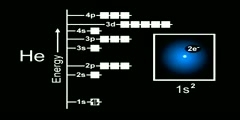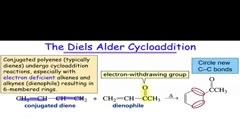Lec 2 - Introduction to Limits (HD)
This is a lecture of Khan Academy. Lecture name is introduction to limits. It is recorded high definition.
Video is embedded from external source so embedding is not available.
Video is embedded from external source so download is not available.
Channels: Mathematics
Tags: Introduction to Limits HD
Uploaded by: khancalculus ( Send Message ) on 05-09-2012.
Duration: 11m 32s
Here is the next lecture for this course
Lec 3 - Introduction to Limits
07:37 | 3379 viewsLec 1 - Introduction to Limits (HD)
11:32 | 2602 viewsLec 2 - Introduction to Limits
07:37 | 2488 viewsLec 1 - Course Introduction and Newtonian ...
01:13:21 | 3856 viewsHow Evolution Works- Introduction (Part I)
08:29 | 11008 viewsIntroduction to Electron Configuration
01:52 | 12023 viewsIntroduction to diatomeas
02:27 | 5522 viewsIntroduction to Cycloaddition Reactions
04:44 | 7249 viewsLec 1 - Introduction to the Course - Int ...
45:02 | 5636 viewsLec 2 - MIT 3.091 Introduction to Solid S ...
43:53 | 8035 viewsLec 3 - MIT 3.091 Introduction to Solid S ...
47:47 | 7342 viewsLec 4 - MIT 3.091 Introduction to Solid S ...
50:14 | 7311 viewsLec 5 - MIT 3.091 Introduction to Solid S ...
51:04 | 6828 viewsLec 6 - MIT 3.091 Introduction to Solid S ...
50:48 | 7356 viewsLec 7 - MIT 3.091 Introduction to Solid S ...
50:24 | 7322 viewsNo content is added to this lecture.
This video is a part of a lecture series from of khan
Lecture list for this course
Lec 1 - Newton Leibniz and Usain Bolt
Lec 3 - Introduction to Limits
Lec 4 - Limit Examples (part 1)
Lec 5 - Limit Examples (part 2)
Lec 6 - Limit Examples (part3)
Lec 7 - Limit Examples w/ brain malfunction on first prob (part 4)
Lec 11 - Epsilon Delta Limit Definition 1
Lec 12 - Epsilon Delta Limit Definition 2
Lec 13 - Calculus: Derivatives 1 (new HD version)
Lec 14 - Calculus: Derivatives 2 (new HD version)
Lec 15 - Calculus: Derivatives 2.5 (new HD version)
Lec 16 - Derivative Intuition Module
Lec 17 - Calculus: Derivatives 1
Lec 18 - Calculus: Derivatives 2
Lec 19 - Calculus: Derivatives 3
Lec 28 - Proof: d/dx(ln x) = 1/x
Lec 29 - Proof: d/dx(e^x) = e^x
Lec 30 - Proofs of Derivatives of Ln(x) and e^x
Lec 31 - Extreme Derivative Word Problem (advanced)
Lec 32 - Implicit Differentiation
Lec 33 - Implicit Differentiation (part 2)
Lec 34 - More implicit differentiation
Lec 35 - More chain rule and implicit differentiation intuition
Lec 36 - Trig Implicit Differentiation Example
Lec 37 - Calculus: Derivative of x^(x^x)
Lec 38 - Introduction to L'Hopital's Rule
Lec 39 - L'Hopital's Rule Example 1
Lec 40 - L'Hopital's Rule Example 2
Lec 41 - L'Hopital's Rule Example 3
Lec 42 - Maxima Minima Slope Intuition
Lec 43 - Inflection Points and Concavity Intuition
Lec 45 - Calculus: Maximum and minimum values on an interval
Lec 46 - Calculus: Graphing Using Derivatives
Lec 47 - Calculus Graphing with Derivatives Example
Lec 48 - Graphing with Calculus
Lec 49 - Optimization with Calculus 1
Lec 50 - Optimization with Calculus 2
Lec 51 - Optimization with Calculus 3
Lec 52 - Optimization Example 4
Lec 53 - Introduction to rate-of-change problems
Lec 54 - Equation of a tangent line
Lec 55 - Rates-of-change (part 2)
Lec 56 - Ladder rate-of-change problem
Lec 58 - The Indefinite Integral or Anti-derivative
Lec 59 - Indefinite integrals (part II)
Lec 60 - Indefinite Integration (part III)
Lec 61 - Indefinite Integration (part IV)
Lec 62 - Indefinite Integration (part V)
Lec 63 - Integration by Parts (part 6 of Indefinite Integration)
Lec 64 - Indefinite Integration (part 7)
Lec 65 - Another u-subsitution example
Lec 66 - Introduction to definite integrals
Lec 67 - Definite integrals (part II)
Lec 68 - Definite Integrals (area under a curve) (part III)
Lec 69 - Definite Integrals (part 4)
Lec 70 - Definite Integrals (part 5)
Lec 71 - Definite integral with substitution
Lec 72 - Integrals: Trig Substitution 1
Lec 73 - Integrals: Trig Substitution 2
Lec 74 - Integrals: Trig Substitution 3 (long problem)
Lec 75 - Periodic Definite Integral
Lec 76 - Simple Differential Equations
Lec 77 - Solid of Revolution (part 1)
Lec 78 - Solid of Revolution (part 2)
Lec 79 - Solid of Revolution (part 3)
Lec 80 - Solid of Revolution (part 4)
Lec 81 - Solid of Revolution (part 5)
Lec 82 - Solid of Revolution (part 6)
Lec 83 - Solid of Revolution (part 7)
Lec 84 - Solid of Revolution (part 8)
Lec 85 - Sequences and Series (part 1)
Lec 86 - Sequences and series (part 2)
Lec 87 - Maclauren and Taylor Series Intuition
Lec 88 - Cosine Taylor Series at 0 (Maclaurin)
Lec 89 - Sine Taylor Series at 0 (Maclaurin)
Lec 90 - Taylor Series at 0 (Maclaurin) for e to the x
Lec 91 - Euler's Formula and Euler's Identity
Lec 92 - Visualizing Taylor Series Approximations
Lec 93 - Generalized Taylor Series Approximation
Lec 94 - Visualizing Taylor Series for e^x
Lec 95 - Polynomial approximation of functions (part 1)
Lec 96 - Polynomial approximation of functions (part 2)
Lec 97 - Approximating functions with polynomials (part 3)
Lec 98 - Polynomial approximation of functions (part 4)
Lec 99 - Polynomial approximations of functions (part 5)















